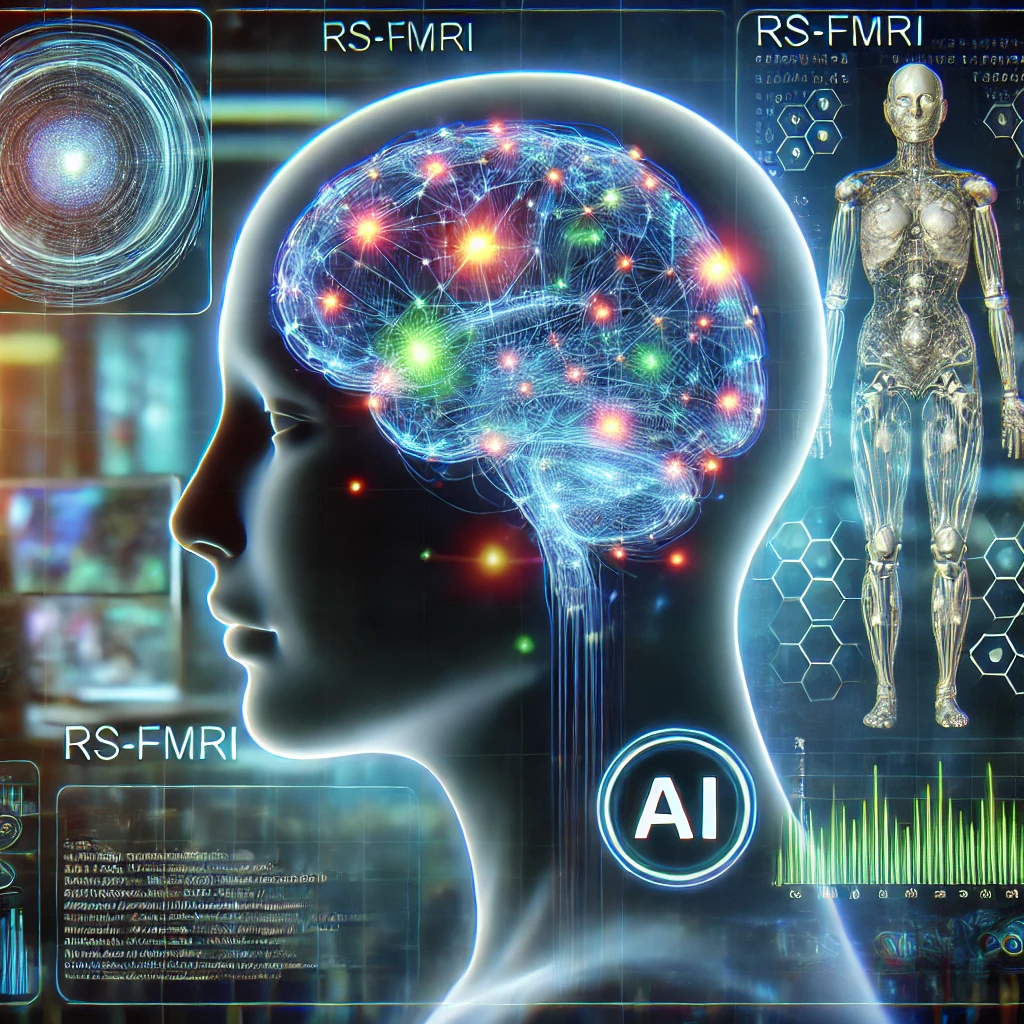AI-Driven Neurodevelopmental Disorder Detection Using rs-fMRI
Neurodevelopmental disorders (NDDs), such as Autism Spectrum Disorder (ASD), Attention Deficit Hyperactivity Disorder (ADHD), and other cognitive impairments, significantly impact brain function and development. Early and accurate diagnosis is crucial for effective intervention, yet traditional diagnostic methods rely on subjective assessments, making them prone to variability and delays. Recent advances in Artificial Intelligence (AI) and computational intelligence have introduced new opportunities to enhance the detection of NDDs using advanced neuroimaging techniques like resting-state functional Magnetic Resonance Imaging (rs-fMRI).
This article explores how AI-enabled computational intelligence can be used to detect neurodevelopmental disorders by analyzing rs-fMRI data, leveraging machine learning (ML), deep learning (DL), and graph-based approaches.
Understanding rs-fMRI and Its Role in NDD Detection
Resting-state functional MRI (rs-fMRI) measures brain activity by detecting fluctuations in blood-oxygen-level-dependent (BOLD) signals when a person is at rest. These signals help in understanding functional connectivity between different brain regions.
- Advantages of rs-fMRI in NDD Diagnosis:
- Non-invasive and does not require active participation from patients.
- Provides insights into functional brain networks, which are often altered in individuals with NDDs.
- Offers a rich dataset for AI models to analyze connectivity patterns and detect anomalies.
AI-enabled Computational Intelligence Approaches
Computational intelligence methods, particularly AI-driven approaches, play a significant role in processing and analyzing rs-fMRI data for NDD detection. The key methods include:
1. Machine Learning (ML) Approaches
ML techniques can extract meaningful patterns from rs-fMRI data to classify individuals as having a neurodevelopmental disorder or not.
- Feature Extraction: rs-fMRI data is preprocessed to extract features such as functional connectivity matrices, graph metrics, and time-series characteristics.
- Common ML Algorithms:
- Support Vector Machines (SVMs): Used for binary classification of NDD patients vs. healthy individuals.
- Random Forests: Feature selection and classification.
- k-Nearest Neighbors (k-NN): Clustering similar brain activity patterns.
2. Deep Learning (DL) Approaches
Deep learning, particularly convolutional and recurrent neural networks, has demonstrated superior performance in handling high-dimensional rs-fMRI data.
- Convolutional Neural Networks (CNNs): Used to identify spatial patterns in connectivity maps.
- Recurrent Neural Networks (RNNs) & Long Short-Term Memory (LSTMs): Capture temporal dependencies in brain activity signals.
- Graph Neural Networks (GNNs): Represent the brain as a network (graph) and analyze functional connectivity.
3. Graph-based Analysis
Since the brain operates as a network, Graph Theory plays a crucial role in understanding connectivity disruptions in NDDs.
- Graph Construction: The brain is represented as a network where nodes are brain regions and edges signify functional connectivity strength.
- Key Metrics in Graph Theory:
- Degree Centrality: Identifies highly connected brain regions.
- Clustering Coefficient: Measures network segregation.
- Small-worldness: Quantifies how efficiently information flows in the brain.
- Graph Neural Networks (GNNs): Deep learning models that leverage graph structures to improve classification accuracy.
International Research Awards on Network Science and Graph Analytics
Visit Our Website : https://networkscience.researchw.com/
Nominate Now : https://networkscience-conferences.researchw.com/award-nomination/?ecategory=Awards&rcategory=Awardee
Contact us : network@researchw.com
Get Connected Here:
*****************
Instagram: https://www.instagram.com/emileyvaruni/
Tumblr: https://www.tumblr.com/emileyvaruni
Pinterest: https://in.pinterest.com/emileyvaruni/
Blogger: https://emileyvaruni.blogspot.com/
Twitter: https://x.com/emileyvaruni
YouTube: https://www.youtube.com/@emileyvaruni
#sciencefather #researchw #researchawards #NetworkScience #GraphAnalytics #ResearchAwards #InnovationInScience #TechResearch #DataScience #GraphTheory #ScientificExcellence #AIandNetworkScience #AI #MachineLearning #NeurodevelopmentalDisorders #rsfMRI #BrainImaging #DeepLearning #HealthcareAI #Neuroscience #AutismResearch #ADHDDiagnosis #MedicalAI #GraphAnalytics #ComputationalIntelligence #FunctionalMRI #BrainHealth

Comments
Post a Comment